SAMPLES
 Receive your sample
Receive your sample
 Receive your sample
Receive your sample
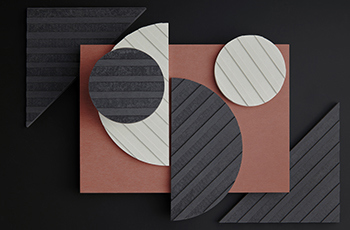 Know more
Know more
 Read now
Read now
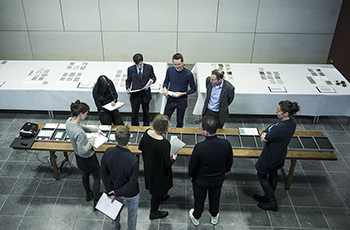 Request a CPD
Request a CPD
 Find out more
Find out more
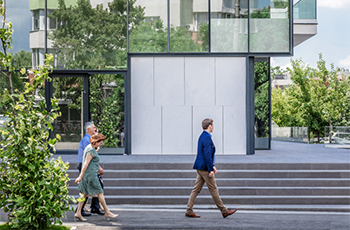 Contact us
Contact us
 Watch now
Watch now
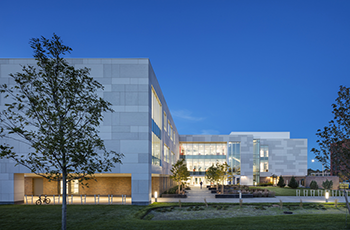 Know more
Know more
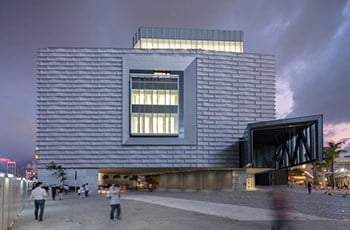 Know more
Know more
Liam McCormick (1916–1991), whose centenary is October 24th, was one of the giants of Irish architecture. And of those giants, he might have been the most loved, not just by architects, but by the public, too, who in 1999 voted his incomparable church at Burt Irish Building of the Twentieth Century.
Séamus Heaney remarked of Liam that "he cut a broad swathe and left a rich harvest," which he did, in several fields, including politics, but it is as the father of modern Irish church architecture, who broke the mould of the steadfastly Hiberno-Gothic-Italianate and created something altogether different – something new, something modern – that he is revered.
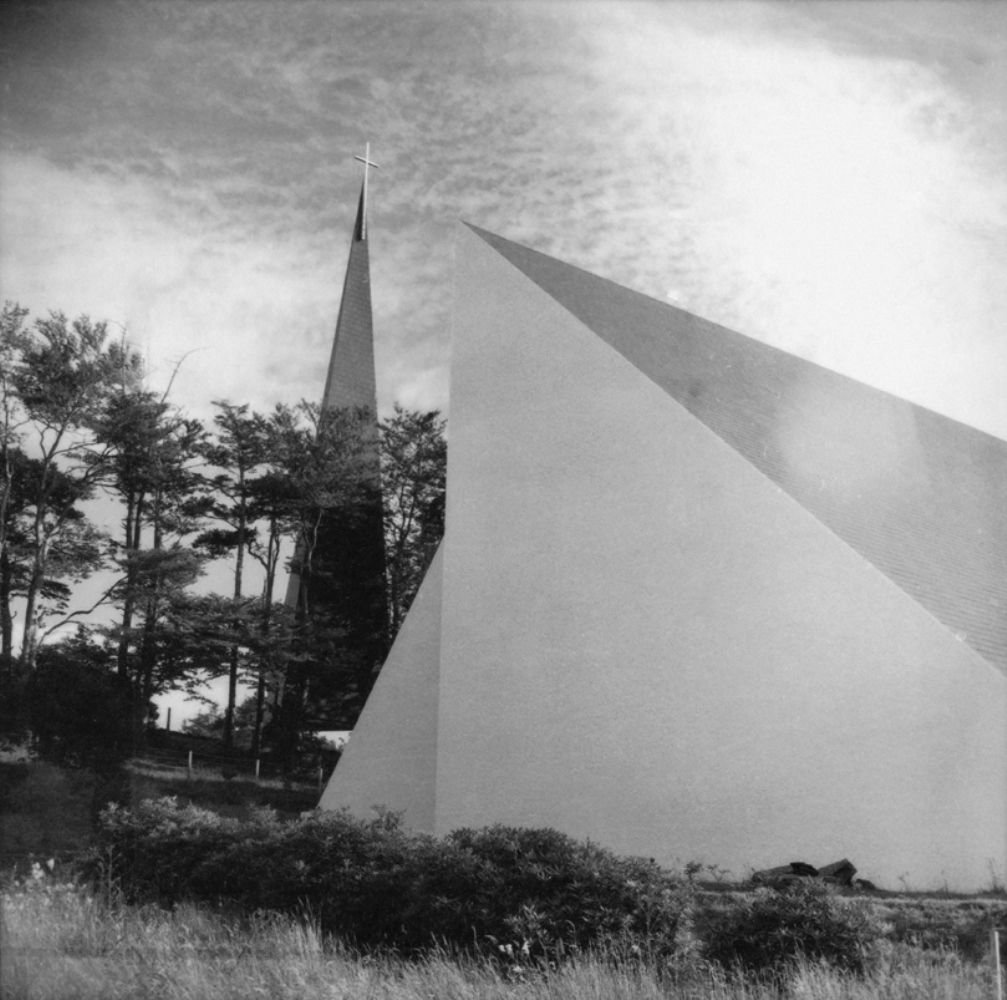
Writing in 2008, John Tuomey claimed that “Among the thirty or so churches that make up McCormick’s lifelong project, three Donegal buildings stand out together to demonstrate his particular roughcast, resolute, lean and loving sensibility to site and community identity. A sustained line of progressive investigation culminates in the top-lit fort plan of Burt (1967), in the side-lit cave form of Creeslough (1971), in the soffit-lit barn section of Glenties (1974).”
The starkly simple rectangular church at Glenties – a radical departure from the circular form of Burt and the fan-shaped Creeslough – replaced a post-Penal church of 1858. Liam described the rationale behind it: "Out of the blue I received a letter asking me to design a church because the people of Glenties liked Burt church. On seeing the site, once the demesne of a large house, my aim was to set the church deep into the hill, preserving as much of the planting as possible so as to retain the quality of the Ardara Road, without competing with the courthouse and other buildings opposite. The steeply sloping site indicated that building could only take place along the contour line. To reduce cutting too deeply into the hillside and to introduce a spatial element into what might have been a barn-like structure, both roof and floor have been stepped."
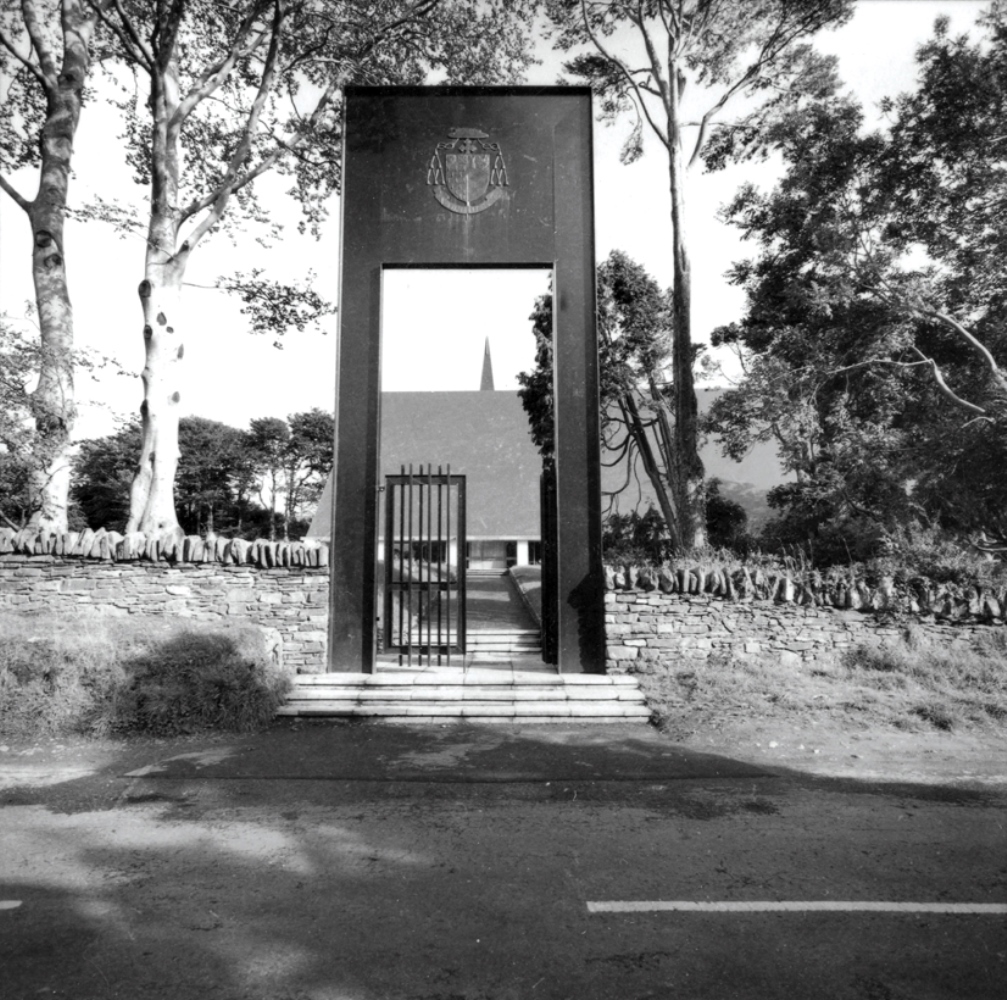
The church is distinguished by a steeply pitched roof sweeping down almost to ground level. The roof consists of two offset mono-pitches, the slope to the rear, largely concealed from view, stopping short of the main ridge height to allow a long strip of clerestory glazing catch the morning light. Simple materials – pure planes of fibre-cement slates set against tall, triangular gables of white roughcast – accentuate the dramatically bold and angular form, while internally, natural light from unexpected directions is the key to its success.
The approach to the church is framed by a Japanese-style steel arch bearing the coat of arms of the Diocese of Raphoe. A slender, pyramidal bell tower was set on axis, behind the church, to lead one’s eye towards the front door. Regrettably, the freestanding bell tower was removed soon after the church opened. Many of the mature trees that graced the site have also been taken down, and an enlarged car park has damaged the sensitive landscaping designed originally by Florence Woods.
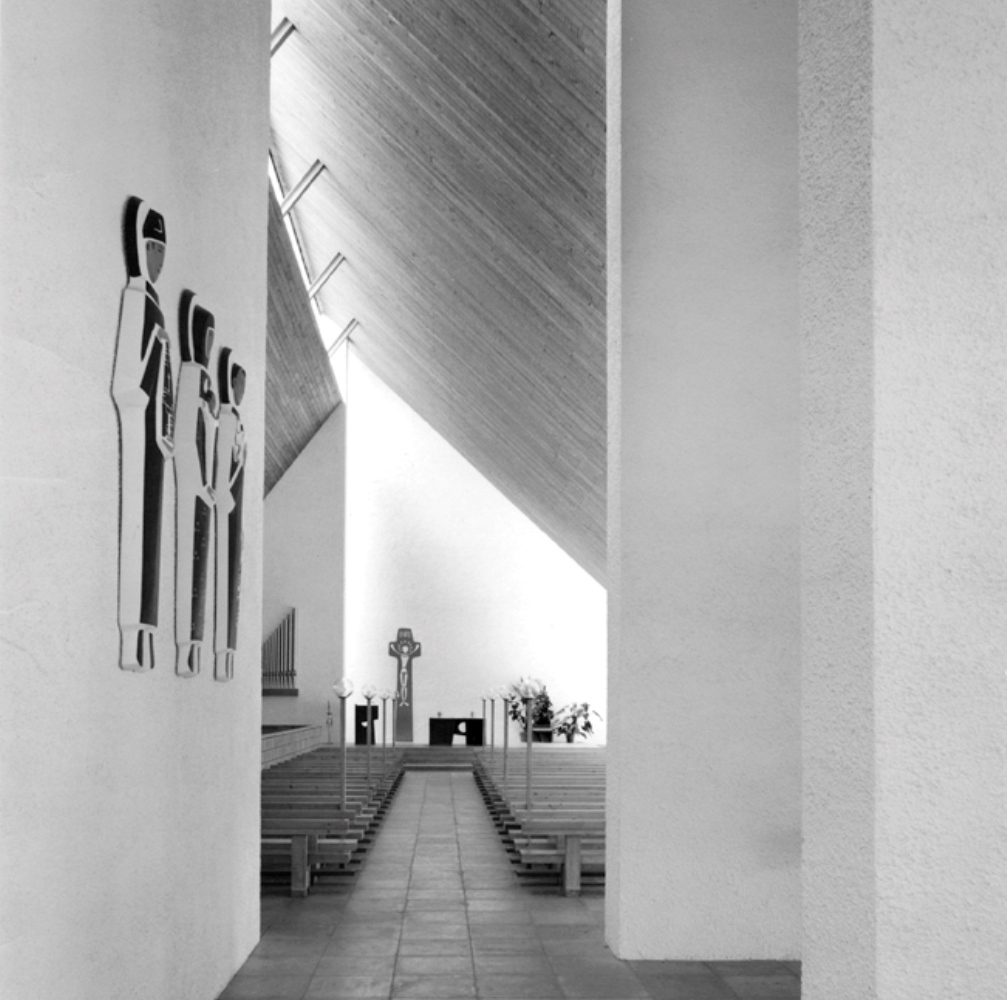
Rainwater is collected in a massive gutter and, in a delightful medievalist touch, disgorges into a pool through gargoyles (by the sculptor Imogen Stuart) in the form of animal heads depicting cows, sheep and goats. The reflecting pool runs along the front of the church, with low windows admitting a shimmering light that floods across the floor of the interior.
Stuart also designed the metal push-plates on the entrance doors. They feature a fish, a dove, a tortoise, a cockerel, a hedgehog, an owl and a snail. Entering the church, the interior is equally if not even more stunning. Faced by three painted plaster figures of St Conal, Our Lady and St Colmcille (by Nell Pollen), you are instantly overwhelmed by the sheer height of the interior that greets you. On the left is the Blessed Sacrament chapel, seating 50; to the right, the luminous main body of the church, which accommodates 700 parishioners.
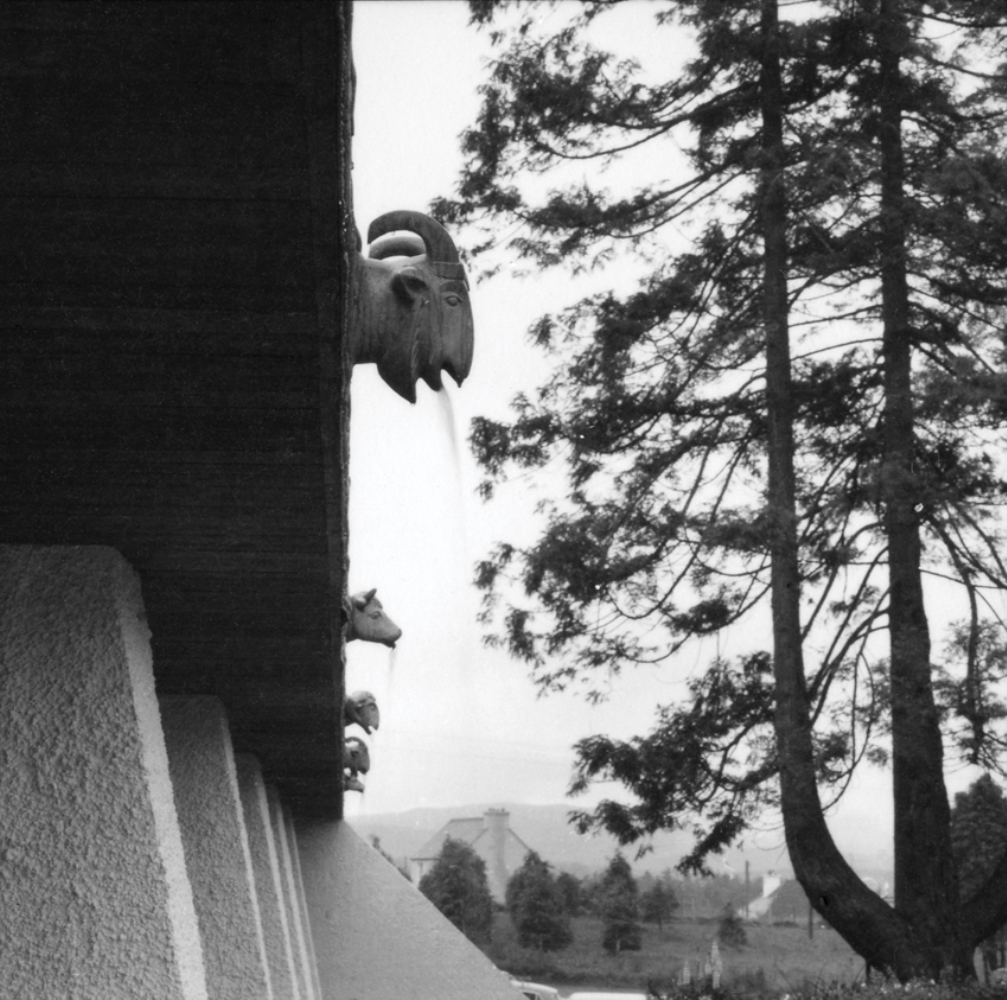
The finishes are plain and austere – white walls, concrete floor slabs and ceilings lined with western hemlock boards. The cross, also by Imogen Stuart, stands 16 feet high. Cut from steel, it combines the overall shape of an Irish cross-slab, with the graphic impact of a penal cross and the height of a high cross. The font, altar, ambo and celebrant’s chair are of Liscannor stone, by Michael Biggs. Other artists involved included Ruth Brandt and Joy McCormick, the architect’s wife, who designed vestments made from Donegal tweed.
The church was commended in the RIAI Gold Medal awards for the period 1974-76. As we mark his centenary, the last words should be left to Liam: “There are two churches I’m very fond of – Glenties and Burt. In Glenties, light comes in from the side, the source concealed. This is one of my big interests – to use light to advantage.”
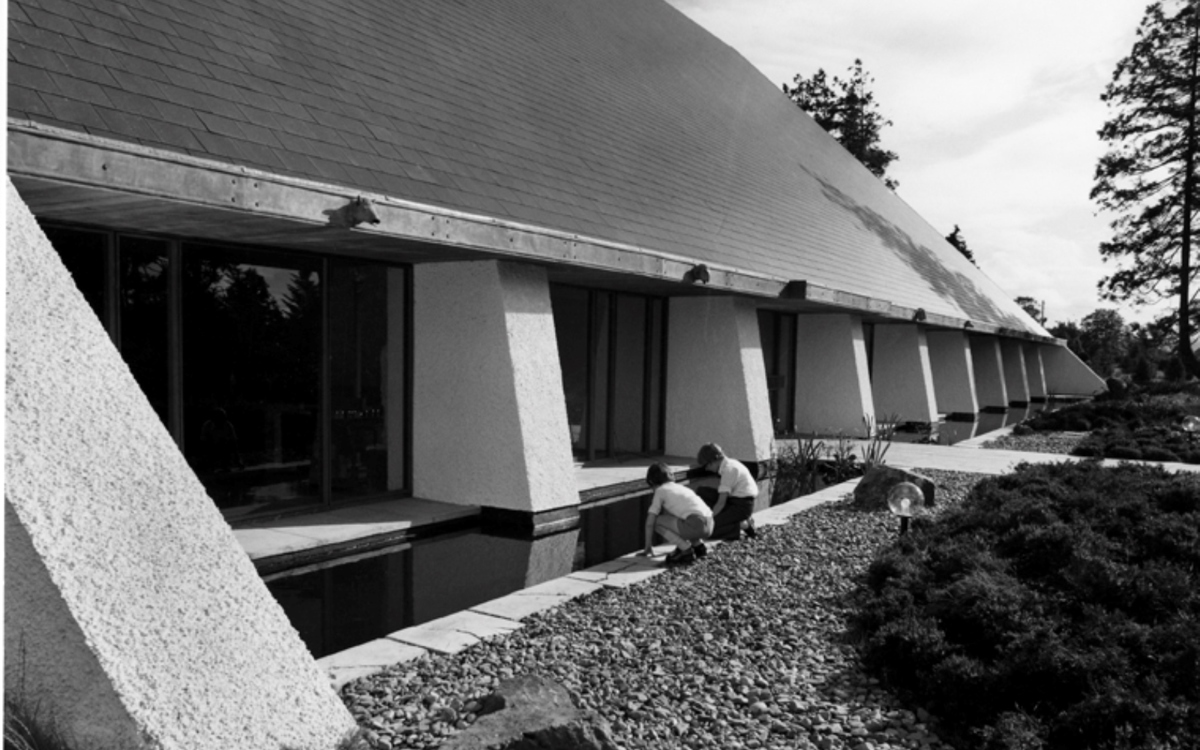
Architects: Liam McCormick & Partners 1970 – 1974
Location: St. Conal's Church, Glenties, Co Donegal
Photography: Robert Anderson Photography courtesy McCormick family archive
Curated By: Shane O'Toole
Feeling inspired? You can enjoy more Building of Month articles curated by Shane O'Toole by clicking below.